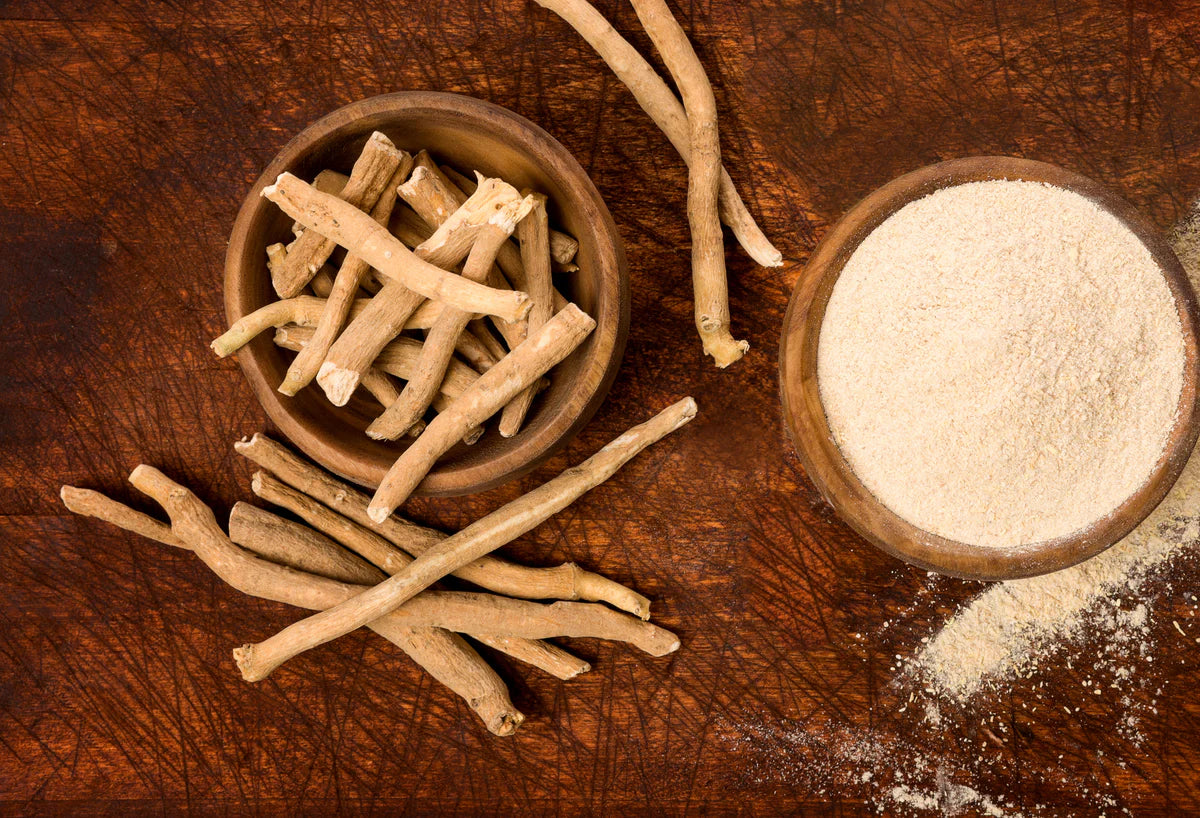
- Regular price
- €9,99 EUR
- Unit price
- per
Organic Ashwagandha Powder. 100% Organic, Natural and Pure. Made in India from Withania somnifera Root. Helps to Reduce Stress, Anxiety and Improve Sleep Quality.
Couldn't load pickup availability.
Characteristics
-
What is Ashwagandha
Ashwagandha, whose botanical name is Withania somnifera and belongs to the Solanaceae family. It is a herbaceous shrub that originates in the Middle East and especially in India where it is called "Indian Ginseng".
-
Organic Ashwagandha Powder
The powder obtained from the Ashwagandha root has a bitter taste and an unpleasant odor, but it has good solubility, for this reason it is recommended to take the powder mixed with other foods to make it more pleasant to consume.
-
How to Hire
Ashwagandha powder has a very distinctive taste, but it can be easily disguised by mixing it with other ingredients. It can be dissolved in fruit juices, drinks, smoothies, milk or yogurt or added to recipes or dough for cakes and biscuits.
Ashwagandha
In Dust

Organic Ashwagandha Powder
The powder obtained from the Ashwagandha root has a bitter taste and an unpleasant odor, but it has good solubility, for this reason it is recommended to take the powder mixed with other foods to make it more pleasant to consume.
FAQ
Useful Information
What is Ashwagandha?
What is Ashwagandha?
Ashwagandha is a well-known plant in Ayurvedic medicine and evidence of its use dates back over 3,000 years. Its botanical name is Withania somnifera and it belongs to the Solanaceae family, the same as tomato, eggplant, belladonna, tobacco and even potato.
It is a herbaceous shrub, woody at the base, which reaches a height of about 170 cm and grows spontaneously or can be cultivated. Also known as "King and Queen of Herbs" or "Winter Cherry" it is increasingly known and appreciated for its properties.
The plant
The plant
Withania somnifera is a woody herbaceous shrub. It belongs to the Solanaceae family, the same as tomatoes, and like tomatoes it has small green-yellow flowers and oval leaves. The color of the fruits varies from red to yellow-orange depending on ripeness and they look like small tomatoes. The plant is covered with a down that gives it a gray-cerulean reflection.
Ashwagandha originates from North Africa, the Middle East and especially India, where, thanks to its properties, it is considered the most popular plant and for this reason called “Indian Ginseng”.
The story
The story
Ashwagandha comes from the Sanskrit ashwa which means “horse”, the origin of this name comes from the fact that the root of this plant was able to give people the strength of a stallion. Another theory states that the literal meaning of the word ashwagandha is “horse smell” because the fresh roots of the herb have an unpleasant smell.
The name of the species somnifera comes from Latin and can be translated as "that induces sleep", this would refer to its ability to improve the quality of sleep. There are testimonies that allow us to understand that the root of this plant was used many years ago by the Indian population. In fact, in addition to being used as a food, the root is used especially in folk and Ayurvedic medicine.
Taste and texture
Taste and texture
The powder obtained from the Ashwagandha root has a bitter taste and an unpleasant odor, but it has good solubility, for this reason it is recommended to take the powder mixed with other foods to make it more pleasant to consume.
The processing method is very important, Ashwagandha powder must be processed at low temperatures to preserve all its nutrients intact.
How to take ashwagandha powder?
How to take ashwagandha powder?
Organic Ashwagandha powder is considered an excellent way to integrate this root into your diet.
It pairs well with fruit juices, chocolate, yogurt or milk and much more… Ashwagandha powder can be dissolved in drinks, smoothies or added to cake and cookie dough or savory recipes. Ashwagandha tea is another way to consume the root and you can add a little manuka honey to enhance its flavor.
Recipes with Ashwagandha
Recipes with Ashwagandha
Ashwagandha powder has a very distinctive taste and can be taken in various ways:
- in smoothies or fruit juices
- in yogurt and milk
- together with muesli or other dried fruit and oil seeds
- as an ingredient in homemade desserts
- in salads or as a condiment
- for broths or soups
- in herbal teas or tea

100% Organic
Our Ashwagandha powder is 100% pure and organic, produced in India on organic plantations and is approved by the Control Body of the Ministry of Agriculture.
At NaturaleBio we pay particular attention in selecting all our organic products.
Ashwagandha powder is processed at low temperatures, so its properties are preserved even during this process.














